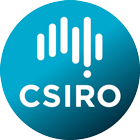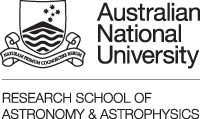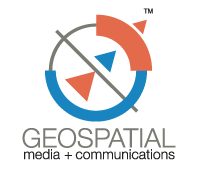FD-5: Recent Advances in Hyperspectral Data Analysis
Qian Du, Antonio Plaza
Abstract:
Hyperspectral remote sensing has been of great interest in the geoscience and remote sensing society since its birth in the early of 1980's. The related research has been advanced dramatically due to the advances in hyperspectral sensor technology and increased availability of airborne and spaceborne data. This can be evidenced by the fact that not only the breadth and depth of hyperspectral applications but also the breadth and depth of innovative techniques in information mining from hyperspectral imagery have been significantly enhanced.
In the typical hyperspectral image processing chain, data calibration and correction are conducted; data compression may be applied to save transmission and storage resources. Due to the high spectral correlation in hyperspectral imagery, spectral dimensionality reduction may be needed for some applications in order to save computational cost, to make some problems tractable, and to even improve data analysis performance. Then hyperspectral data is ready for various analysis, such as spectral unmixing, target and change detection, and classification. This tutorial is focused on four major topics of research: dimensionality reduction, spectral unmixing, detection, and classification. In each topic, the standard techniques will be introduced and recent advances will be presented. Techniques discussed in this tutorial will cover important approaches in the literature, including both supervised and unsupervised techniques, and linear and nonlinear techniques. Recent advances, such as semisupervised and active learning, sparse constrained hyperspectral representation, and graph regularized analysis, are presented. Potential research trend in each category will also be discussed. This tutorial is for middle-level researchers with the background of hyperspectral image processing and analysis.
PRELIMINARY COURSE OUTLINE
Morning Session:
1. Overview (Dr. Du)
1.1 Hyperspectral image characteristics
1.2 Hyperspectral image processing chain
2. Hyperspectral Dimensionality Reduction (Dr. Du)
2.1 Supervised band selection
2.2 Unsupervised band selection
2.3 Supervised transform-based dimensionality reduction
2.4 Unsupervised transform-based dimensionality reduction
2.5 Recent advances and research directions
3. Hyperspectral Unmixing (Dr. Plaza)
3.1 Estimation of the number of endmembers
3.2 Endmember extraction
3.3 Abundance estimation
3.4 Nonlinear unmixing
3.5 Recent advances and research directions
Afternoon Session:
4. Hyperspectral Detection (Dr. Du)
4.1 Supervised target detection
4.2 Unsupervised target (anomaly) detection
4.3 Nonlinear detection
4.4 Hyperspectral change detection
4.5 Recent advances and research directions
5. Hyperspectral Classification (Dr. Plaza)
5.1 Supervised classification
5.2 Unsupervised classification
5.3 Semisupervised and active learning for classification
5.4 Spectral/spatial feature extraction/selection for classification
5.5 Recent advances and research directions
Biography:
Dr. Qian Du is currently an Associate Professor in the Department of Electrical and Computer Engineering at Mississippi State University. She has authored or co-authored more than 170 scientific publications including journal papers, book chapters, and peer-reviewed conference proceedings. Her research field is digital image processing and its application to remote sensing problems with an expertise on hyperspectral image exploitation. The research she has conducted covers almost all the topics in remote sensing image processing and analysis, such as target detection, anomaly detection, change detection, supervised and unsupervised classification, linear and nonlinear unmixing, endmember extraction, real-time processing, parallel processing, band selection, data compression, registration and mosaicking, sharpening, visualization, etc. Her research interests also include image super-resolution and neural networks. Dr. Du has been active in IEEE Geoscience and Remote Sensing Society (GRSS). She has been serving as technical reviewer for many remote sensing and image processing journals, and received the 2010 best reviewer award from IEEE Geoscience and Remote Sensing Letters (GRSL). Dr. Du currently serves as the Co-chair for Data Fusion Technical Committee of IEEE GRSS. She serves as Associate Editor for IEEE Journal of Selected Topics in Applied Earth Observations and Remote Sensing (JSTARS), and Associate Editor for Signal Processing Letters. She also serves as the Guest Editor for the special issue on Spectral Unmixing of Remotely Sensed Data for IEEE Transactions on Geoscience and Remote Sensing (TGRS), and the Guest Editors for the special issue on High Performance Computing in Earth Observation and Remote Sensing, the special issue on Exploitation of Optical Multiangular Data, and the special issue on Hyperspectral Remote Sensing: Theory, Methods, and Applications for JSTARS. Dr. Du is the General Chair for the IEEE-GRSS 4th Workshop on Hyperspectral Image and Signal Processing: Evolution in Remote Sensing (WHISPERS), and General Chair for the 7th International Association for Pattern Recognition (IAPR) Workshop on Pattern Recognition in Remote Sensing (PRRS). Additional information on the biography and current activities pursued by Dr. Du is available at the following website: http://www.ece.msstate.edu/~du
Dr. Antonio J. Plaza is an Associate Professor with the Department of Technology of Computers and Communications, University of Extremadura, Spain. He has authored or co-authored more than 200 scientific publications including journal papers, book chapters and peer-reviewed conference proceedings. His main research interests comprise hyperspectral image and signal processing and efficient implementations of hyperspectral imaging techniques on high performance computing architectures. Dr. Plaza has been visiting researcher/professor at several institutions, including NASA's Goddard Space Flight Center, the Remote Sensing, Signal and Image Processing Laboratory (RSSIPL) at University of Maryland, Baltimore County, or the AVIRIS group at NASA's Jet Propulsion Laboratory. Dr. Plaza is a Senior Member of IEEE and an Associate Editor for the IEEE Transactions on Geoscience and Remote Sensing journal in the areas of Hyperspectral Image Analysis and Signal Processing. He is also an Associate Editor for the Journal of Real-Time Image Processing. He is Editor of a book on High-Performance Computing in Remote Sensing for Chapman & Hall/CRC Press. He is also Guest Editor of a special issue on Spectral Unmixing of Remotely Sensed Data for the IEEE Transactions on Geoscience and Remote Sensing, Guest Editor of a special issue on High Performance Computing in Earth Observation and Remote Sensing for the IEEE Journal of Selected Topics in Applied Earth Observations and Remote Sensing, Guest Editor of a special issue on High-Performance Computing for Hyperspectral Imaging for the International Journal of High Performance Computing Applications, and Guest Editor of a special issue on Architectures and Techniques for Real-Time Processing of Remotely Sensed Images for the Journal of Real-Time Image Processing. Dr. Plaza currently serves as the Editor-in-Chief for IEEE Transactions on Geoscience and Remote Sensing. Dr. Plaza is the project coordinator of HYPER-I-NET (Hyperspectral Imaging Network), a large European project designed to build an interdisciplinary European research community focused on hyperspectral imaging education activities. He was the general chair of the First HYPER-I-NET School on Hyperspectral Imaging held in Cáceres, Spain, and was also a member of the Scientific Committee of the Second HYPER-I-NET School on Earth Science and Applications using Imaging Spectroscopy held in Wageningen, The Netherlands, and the Third HYPER-I-NET School on Hyperspectral Data Processing held in Pavia, Italy. Dr. Plaza was also one of the main lecturers of the International Summer School on Very High Resolution Remote Sensing held in Grenoble, France, in which he covered the topic of spectral mixture analysis in his tutorial presentation. Dr. Plaza is a chair of the SPIE Conference on Satellite Data Compression, Communication and Processing conference. He has been a member of the Program Committee and chaired sessions for several international conferences and symposia, including the IEEE International Geoscience and Remote Sensing Symposium, the SPIE Image and Signal Processing for Remote Sensing Conference, the IEEE Workshop on Remote Sensing and Data Fusion over Urban Areas, and the IEEE Symposium on Signal Processing and Information Technology. He is the General Chair for the IEEE-GRSS 3rd Workshop on Hyperspectral Image and Signal Processing: Evolution in Remote Sensing (WHISPERS). Dr. Plaza has served as an expert evaluator for the European Commission, the European Space Agency, the Belgium Science Foundation, and the Spanish Ministry of Science and Education. He has reviewed more than 200 manuscripts for different journals, including more than 100 papers reviewed for the IEEE Transactions on Geoscience and Remote Sensing and more than 30 papers reviewed for the IEEE Geoscience and Remote Sensing Letters. Additional information on the biography and current activities pursued by Dr. Plaza is available at the following website: http://www.umbc.edu/rssipl/people/aplaza.


 IGARSS13
IGARSS13 @IGARSS2013
@IGARSS2013













